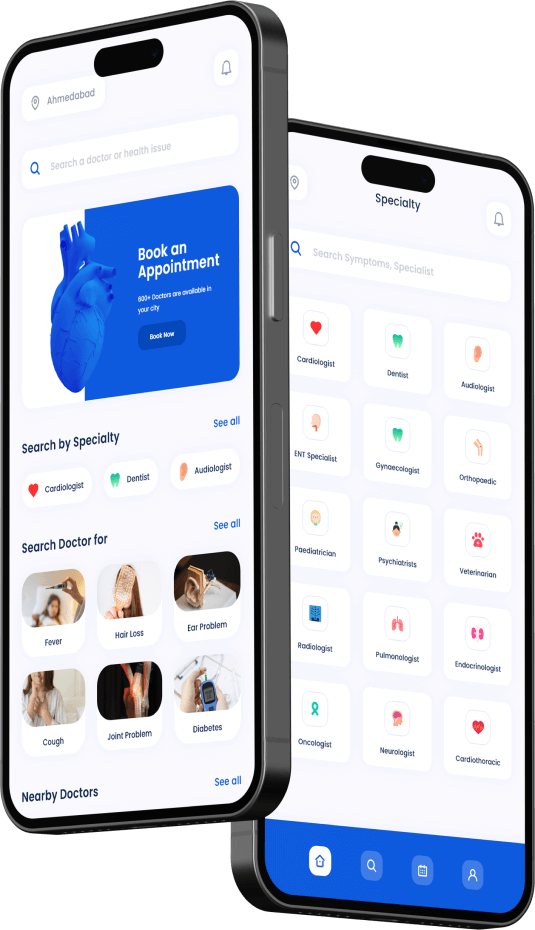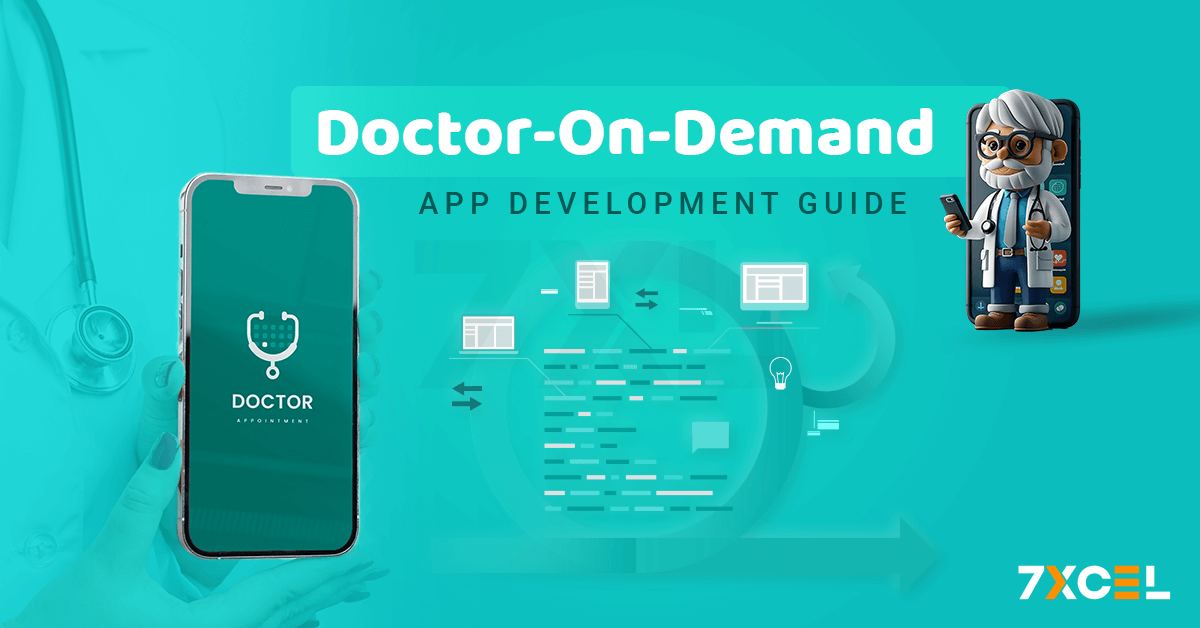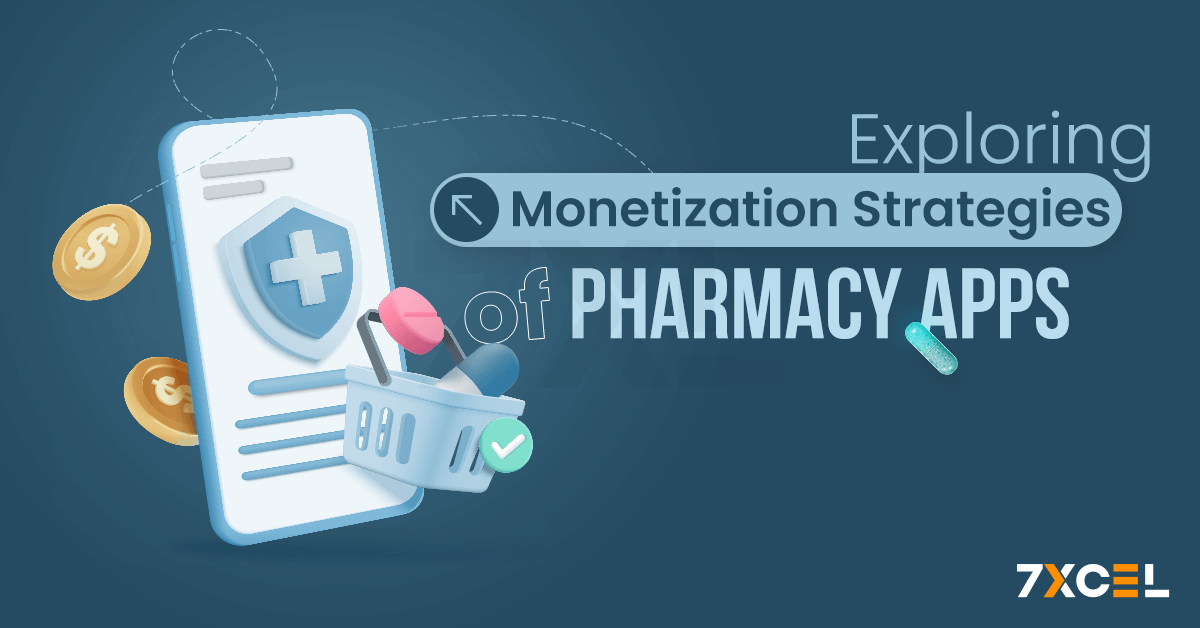Quick Summary:
Developing a doctor-on-demand app involves several critical steps, including market research, defining essential features, selecting the right technology stack, designing UI/UX, development, testing, and maintenance. This complete guide provides a detailed roadmap to help you create a successful telehealth platform that meets patient needs and ensures a seamless user experience.
A major shift in the healthcare sector is being spearheaded by technological advancements and the increasing demand for accessible and convenient medical services. Doctor-on-demand applications have become an essential remedy, enabling people to obtain medical advice, get prescriptions, and conduct virtual consultations with healthcare professionals from the comfort of their homes.
This manual will offer a thorough road map for creating a doctor-on-demand application, covering every step of the process from conception to release and upkeep. By following this step-by-step approach, you can create a successful Telehealth platform that meets user needs and stands out in the competitive market.
Guide To Develop Doctor on Demand Application
The healthcare industry’s transformation has led to the rise of on-demand telemedicine apps. This guide covers the key steps to develop a successful doctor on demand application, from market research to long-term optimization, for healthcare providers, startups, and entrepreneurs.

Defining Your Target Audience
Your Doctor-on-Demand app’s success depends on determining who your target market is. You may develop a Doctor-on-Demand app that specifically caters to the needs & preferences of your target audience by getting to know them well. This will increase user engagement and retention.
As you define your intended user base, take into account the following factors:
- Demographics: Analyze the age, gender, location, and socioeconomic status of your potential users to tailor your app’s features and marketing strategies.
- Medical Needs: Understand the specific healthcare needs and concerns of your target audience, such as common conditions, chronic diseases, or preventive care requirements.
- Technological Proficiency: Assess the technical skills and device preferences of your target users to ensure your app is accessible and user-friendly.
- Insurance Coverage: As this can affect your target audience’s desire to utilize and pay for your services, ascertain which insurance plans and coverage alternatives are most pertinent to them.
- Geographical Considerations: If your target audience is spread across different regions, consider factors like language, cultural preferences, and local healthcare regulations.
Defining Your App’s Unique Value Proposition
Providing a distinct value proposition and differentiating your app are crucial in the very competitive Doctor-on-Demand business. What differentiates your app from the others? Is it the quality of your healthcare providers, the personalized care experience, or the innovative features you provide? Clearly articulate your app’s unique selling points & ensure that it align with the needs & expectations of your target audience.
Consider the following factors when defining your app’s unique value proposition:
- Healthcare Provider Quality: Ensure your app features a network of highly qualified, licensed, and experienced healthcare providers who can deliver high-quality care.
- Personalized Care Experience: Leverage data-driven insights and adaptive algorithms to provide a personalized care journey for each user, catering to their individual health needs and preferences.
- Innovative Features: Incorporate cutting-edge technologies, such as AI-powered symptom analysis, remote patient monitoring, or integrated pharmacy services, to enhance the user experience and set your app apart.
- Accessibility and Inclusivity: Prioritize accessibility features and inclusive design to ensure your app is accessible to users with diverse abilities, languages, and healthcare needs.
- Seamless User Experience: Invest in a user-centric design approach to create an intuitive, visually appealing, and seamless user experience that keeps patients engaged and satisfied.
- Trusted Brand and Reputation: Leverage the expertise of renowned healthcare providers, industry leaders, or reputable healthcare organization to build trust & credibility with your target audience.
By clearly defining your app’s unique value proposition, you can persuade your intended audience and position your Doctor-on-Demand app as a must-have solution in the market.
Developing a Comprehensive Feature Set
To create a successful Doctor-on-Demand app, you’ll need to develop a comprehensive feature set that addresses the requirements of both patients and healthcare providers. Consider the following key features of on-demand doctor app:
Patient-Facing Features:
- Appointment Booking: Enable customers to choose preferred providers, appointment kinds, and availability when conveniently scheduling appointments with healthcare providers.
- Video Consultations: Integrate a secure and user-friendly video conferencing solution to enable real-time consultations between patients and healthcare providers.
- Prescription Management: Enable patients to request and manage their prescriptions, including the ability to refill, track delivery, and communicate with pharmacies.
- Medical Records: Provide a secure platform for patients to store, access, & share the medical records, including test results, medication history, and past consultations.
- Symptom Checker: Incorporate an AI-powered symptom analysis tool to help users identify potential health concerns and receive personalized recommendations.
- Secure Messaging: Allow patients to communicate with their healthcare providers through a secure messaging system, enabling ongoing care coordination and follow-up.
- Payment Integration: Integrate a seamless payment gateway to facilitate secure transactions for consultations, prescriptions, and other services.
Provider-Facing Features:
- Provider Profile Management: Enable healthcare providers to create and manage their profiles, including their specialties, availability, and patient reviews.
- Appointment Scheduling: Provide a comprehensive scheduling system that allows providers to manage their availability, patient appointments, and waitlists.
- Electronic Medical Records (EMR): Integrate a robust EMR system to help providers efficiently document patient consultations, track medical history, and manage patient data.
- Telehealth Capabilities: Ensure a reliable and secure video conferencing solution for healthcare providers to conduct virtual consultations.
- Prescription Management: Allow providers to easily prescribe medications, track prescription refills, and communicate with pharmacies.
- Reporting and Analytics: Offer healthcare providers access to detailed reporting and analytics on patient engagement, treatment outcomes, and practice performance.
Administrative Features:
- User Management: Develop a comprehensive user management system to handle patient and provider onboarding, verification, and account management.
- Billing and Revenue Tracking: Implement a robust billing and revenue tracking system to manage consultations, prescriptions, and other service fees.
- Regulatory Compliance: Ensure your app adheres to relevant healthcare regulations, such as HIPAA in the United States or similar data privacy and security standards in other regions.
- Analytics and Reporting: Provide comprehensive analytics and reporting capabilities to help administrators monitor app usage, patient engagement, and overall business performance.
By developing a feature-rich and user-centric Doctor-on-Demand app, you can create a seamless and efficient healthcare experience for both patients and providers, ultimately driving user adoption and satisfaction.
Ensuring Scalability and Flexibility
As the user base grows and the healthcare landscape evolves, it is essential for a Doctor-on-Demand app to scale and adapt accordingly. Collaborating with a specialized Doctor-On-Demand App Development Company can ensure that the app’s architecture is built with scalability in mind, allowing for the smooth integration of new features, content, and functionalities.
These experts can help design a flexible and robust platform that easily accommodates updates and enhancements. To remain competitive and relevant, regularly gathering user input and continuously improving the software is key.
Key considerations for scalability and flexibility include:
- Modular and Extensible Architecture: Develop your app’s architecture in a modular and extensible way, enabling the easy addition of new features, integrations, and services without disrupting the core functionality.
- Scalable Infrastructure: Ensure your app’s infrastructure, including servers, databases, and cloud services, can handle increasing user traffic, data volumes, and healthcare provider onboarding without compromising performance.
- Continuous Integration and Deployment: Implement robust CI/CD (Continuous Integration and Continuous Deployment) processes to streamline the deployment of updates and new features, ensuring your app remains up-to-date and responsive to user and provider needs.
- Flexible Content and Service Management: Develop a content and service management system that allows healthcare providers, administrators, and subject matter experts to easily create, update, and publish new services, educational resources, and support materials.
- Multilingual and Localization Support: Design your app’s architecture to support multiple languages and cultural adaptations, enabling you to expand your reach to diverse geographic markets.
- Integrations and Partnerships: Ensure your app can seamlessly integrate with third-party healthcare systems, electronic medical record (EMR) platforms, and other relevant tools to enhance its functionality and value proposition.
- User Feedback and Iterative Improvements: Regularly gather user feedback, analyze usage data, and stay informed about industry trends to continuously refine and improve your app’s features, user experience, and healthcare services.
By prioritizing scalability and flexibility, you can future-proof your Doctor-on-Demand app, ensuring it remains a competitive and valuable solution in the ever-evolving healthcare technology landscape.

Planning to Develop an On-Demand Doctor App?
Build your cutting-edge doctor app quicker, simpler, and feature-packed to enhance patient care.
Developing a Robust Monetization Strategy
Monetizing your Doctor-on-Demand app is crucial for its long-term sustainability and growth. Explore various monetization models, carefully analyzing your target audience, market trends, and the value you provide to determine the most suitable approach.
Some common monetization strategies for Doctor-on-Demand apps include:
- Consultation Fees: Charge users a fee for each virtual consultation with a healthcare provider. This model provides a direct revenue stream and aligns with the value proposition of on-demand healthcare services.
- Subscription Model: Offer users access to your app’s full range of features and services for a recurring monthly or annual fee. Long-term client connections are fostered and a consistent revenue stream is provided by this arrangement.
- Freemium Model: Provide a basic version of your app for free, while offering premium features or additional services for a fee. It is possible to draw in a sizable user base with this model & upsell to a set of users willing to pay for enhanced functionality.
- In-App Purchases: Give consumers the option to buy additional services, such as specialized consultations, remote patient monitoring, or personalized care plans, within your app.
- Insurance and Payer Partnerships: Collaborate with insurance providers or healthcare payers to integrate your app’s services into their coverage plans, generating revenue through reimbursements or co-payments.
- Enterprise Solutions: Develop enterprise-level solutions for healthcare organizations, hospitals, or employers, offering customized features, integration capabilities, and data analytics for a higher-priced subscription or licensing model.
- Advertising and Sponsorships: Generate revenue through in-app advertising or sponsored content, leveraging your app’s user base and healthcare expertise to attract relevant advertisers and sponsors.
When selecting a monetization strategy, consider factors such as your target audience’s willingness to pay, the perceived value of your app’s features and services, and the competitive landscape within the Doctor-on-Demand market.
Ensuring Compliance and Security
As a healthcare-focused app, you’ll be handling sensitive patient data and medical information. To safeguard user privacy and data integrity, give top priority to complying with applicable laws and regulations, such as HIPAA in the US or comparable data privacy and security standards in other countries. Implement strong security measures to further this goal. As a result, your app will gain reputation and confidence from consumers and be safer as well.
Key compliance and security considerations include:
- Data Privacy and Protection: Implement strict data privacy policies, get user consent for data collection & usage to make sure the secure storage and handling of personal and medical information.
- Regulatory Compliance: Familiarize yourself with and adhere to the relevant data protection, privacy, and healthcare regulations in your target markets, such as HIPAA, GDPR, or local healthcare laws.
- Secure Authentication and Authorization: Implement secure authentication methods, such as 2FA or biometric login, to protect user’s accounts & prevent unauthorized access to sensitive information.
- Encryption and Data Integrity: Make use of industry-accepted encryption techniques to protect data while it’s in motion and at rest, guaranteeing the privacy and accuracy of medical records.
- Secure Video Consultations: Ensure your app’s video conferencing solution meets the required security & privacy standards for healthcare-related communications.
- Vulnerability Management: Regularly monitor and address security vulnerabilities in your app, third-party libraries, and underlying infrastructure to mitigate potential threats.
- Incident Response & Disaster Recovery: Develop a complete incident response plan and implement robust backup and disaster recovery measures to ensure the continuity of your Doctor-on-Demand app in the event of a security breach or system failure.
By prioritizing compliance and security, you can develop trust with your users, protect sensitive healthcare data, and position your Doctor-on-Demand app as a reliable and trustworthy solution in the market.
Promoting and Marketing Your Doctor-on-Demand App
Developing a feature-rich and secure Doctor-on-Demand app is only the first step. Effective marketing & promotion are essential to reach your target audience and drive user acquisition. Leverage various channels, such as digital marketing, healthcare provider partnerships, and community outreach, to raise awareness and attract potential users.
Some key marketing and promotion strategies for Doctor-on-Demand apps include:
- Content Marketing: Create and distribute high-quality, educational content, such as blog posts, videos, or webinars, to position your app as a thought leader in the healthcare technology space and attract potential users.
- Social Media Engagement: Leverage social media platforms to engage with your target audience, share updates, and showcase the features and benefits of your Doctor-on-Demand app.
- Healthcare Provider Partnerships: Collaborate with healthcare providers, clinics, or hospitals to cross-promote your app and leverage their existing patient base and credibility.
- Referral Programs: Incentivize your existing users to refer their friends, family, or colleagues, leveraging word-of-mouth to acquire new users.
- Local Community Outreach: Participate in local healthcare events, conferences, or community initiatives to raise awareness and showcase your app’s capabilities to potential users.
- Search Engine Optimization (SEO): Optimize your app’s online presence, including your website and app store listings, to improve its discoverability and conversion rates.
- Targeted Advertising: To reach your target demographic with tailored messaging and promotions, make use of digital advertising platforms like Google Ads and social network advertising.
- Partnerships with Insurance Providers: Collaborate with insurance companies to promote your app’s services as part of their healthcare coverage plans, leveraging their existing customer base.
By implementing a thorough marketing strategy which combines digital and traditional channels, you can effectively reach and engage your target audience, driving user acquisition and long-term loyalty for your Doctor-on-Demand app.
Conclusion
The Doctor-on-Demand market offers a substantial opportunity for revolutionizing patient access to medical care through feature-rich, user-centric, and compliant apps. Success in this market hinges on understanding the target audience, defining a unique value proposition, and developing comprehensive features.
Ensuring scalability, flexibility, robust monetization, and prioritizing compliance and security are also crucial. By adhering to these best practices and adapting to the evolving healthcare landscape, you can create a standout Doctor-on-Demand app that provides lasting value to users.








